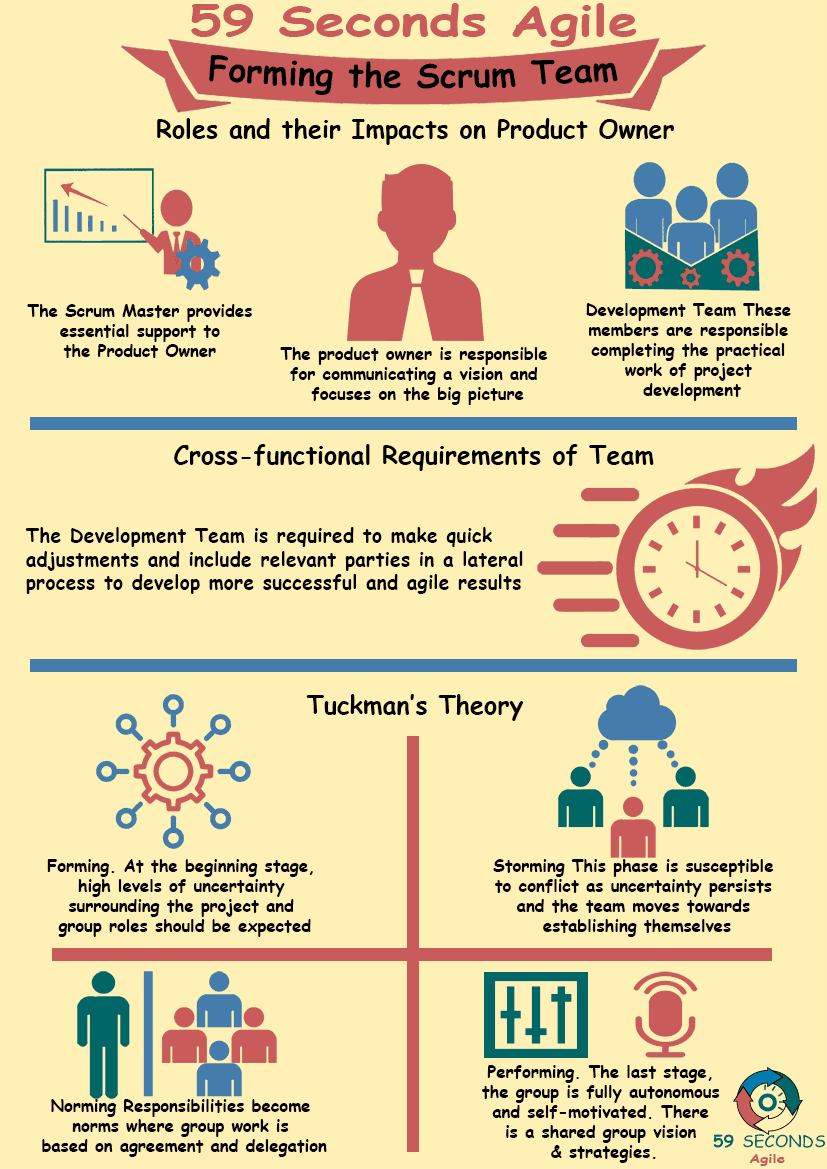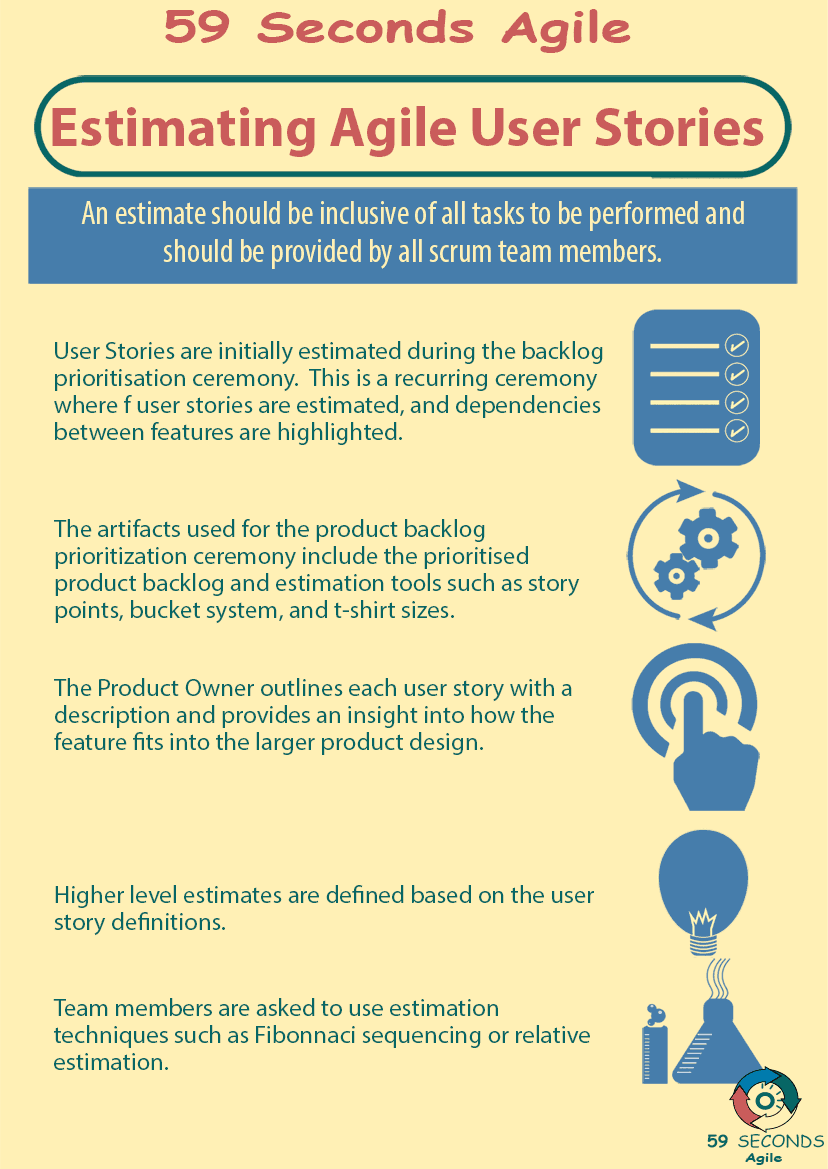What are the Scrum Team Members and what do each of the roles do? This article then takes a look at the testers (do they have a role in the Scrum team?), the Scrum Master. the Product Owner and what are the scrum development team roles.
Scrum Team Members
A 59 Seconds Agile Video Animation
Scrum Team Members for Developers
A 59 Seconds Agile Article
The Scrum team consists of multiple people, filling multiple roles. As a result, developers and other roles must gather in a way that allows them to do their jobs effectively. A Scrum team consists of developers, testers, a Scrum Master, and a Product Owner. Each of these roles is a stakeholder and ultimately benefits from the success of a project. However, the way these roles interact requires the team members to have an understanding of each other.
Scrum Team Members and Responsibilities
The development team is a cross-functional team that consists of a series of roles, including analysts, testers, and coders. Analysts address details around how a product works. They determine input methods, output layout, security measures, and other facets. If developers have any questions or concerns about these details, they must ask the analysts. With such intricate information, developers and analysts must be able to effectively communicate. Without a mutual understanding, analysts may not realize what developers are asking, and developers may not be able to translate analysts’ decisions into working code. Team members in these roles must be able to discuss needs and possible solutions with clarity.
Scrum Team Members and The Scrum Development Team Roles: The Testers
Testers make sure that developers code does what it was intended to do without error. Does the code handle unexpected inputs gracefully? Do edge cases produce anticipated results? Developers focus on creating software and often overlook some areas of testing. The biggest challenge between testers and developers is to understand that problems and bugs are not personal attacks. Therefore, testers and developers on the same team must be able to handle criticism professionally. Testers are obligated to find bugs and try to break developer code. Developers must realize that they make mistakes in their code, and these mistakes must be fixed. Both parties share the goal of creating a polished product for stakeholders.

Scrum Team Members: The Scrum Master
The Scrum Master coordinates the team. If developers or other roles have problems that inhibit their duties, the Scrum Master is the role that handles the issues. This ensures that the Scrum team works at the most efficient rate possible. Developers must understand when to approach the Scrum Master about issues. Similarly, a good Scrum Master should be aware of each team member, and what they might need without always having to make contact. A perceptive Scrum Master anticipates these problems and deals with them quickly. Developers and Scrum Masters work together effectively when they can communicate problems clearly and without wasting time.
Scrum Team Members: The Product Owner
The Product Owner represents the customer and manages the product backlog. Because of this duty, Product Owners determine what features developers will work on. Although this process flows only one direction, it is important that developers understand what Product Owners prioritize as important. Developers who work together on a team must then determine who works on which part. When forming the team, it is important that developers accept the authority of the Product Owner in setting priorities, and the Product Owner allows developers to figure out details of programming themselves.
Scrum Development Team Roles: Cross-Functional Teams
Having each of these roles represented in a single group is a concept known as “cross-functional teams.” A team that is cross-functional consists of several people with different skill sets working toward a common goal. Instead of having multiple redundant roles, many cross-functional teams have only one or two members for each duty. As such, it is important that every team member be able to fulfill their roles fully and appropriately.
Prev <— Continue Reading —> Next
Learn More: Estimating and Planning User Stories
User Stories Applied
A 59 Seconds Agile Book Review
User Stories Applied by Mike Cohn is one of our favourite books on Agile User Stories. The book starts with an overview into user stories, and details what a user story is and the different aspects of them. He then discusses how to go about writing a user story, and provides details of the INVEST criteria that can be used to determine if the story is meeting all of its objectives. Next Mike gives an in depth discussion of who user stories are written for and where to begin when gathering the details for them. The book then discusses acceptance testing user stories, including how to go about specifying these criteria and the responsibilities of the development team and customers during this process.
Prev <— Continue Reading —> Next
Learn More: Estimating and Planning User Stories
Estimating Scrum User Stories
A 59 Seconds Agile Infographic

Prev <— Continue Reading —> Next
Learn More: Estimating and Planning User Stories
Our Favourite Agile Books
We found these books great for finding out more information on Agile Scrum:

